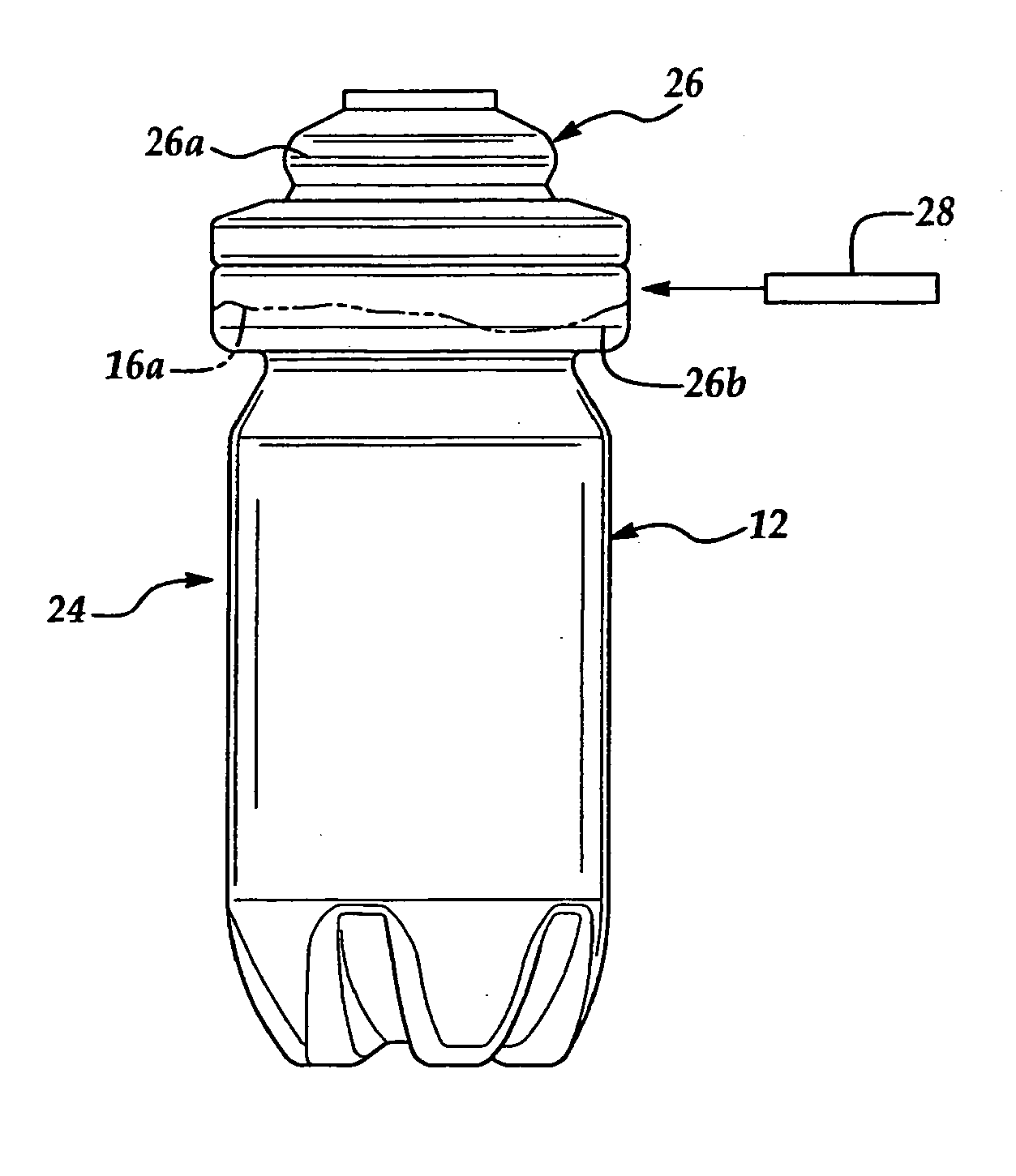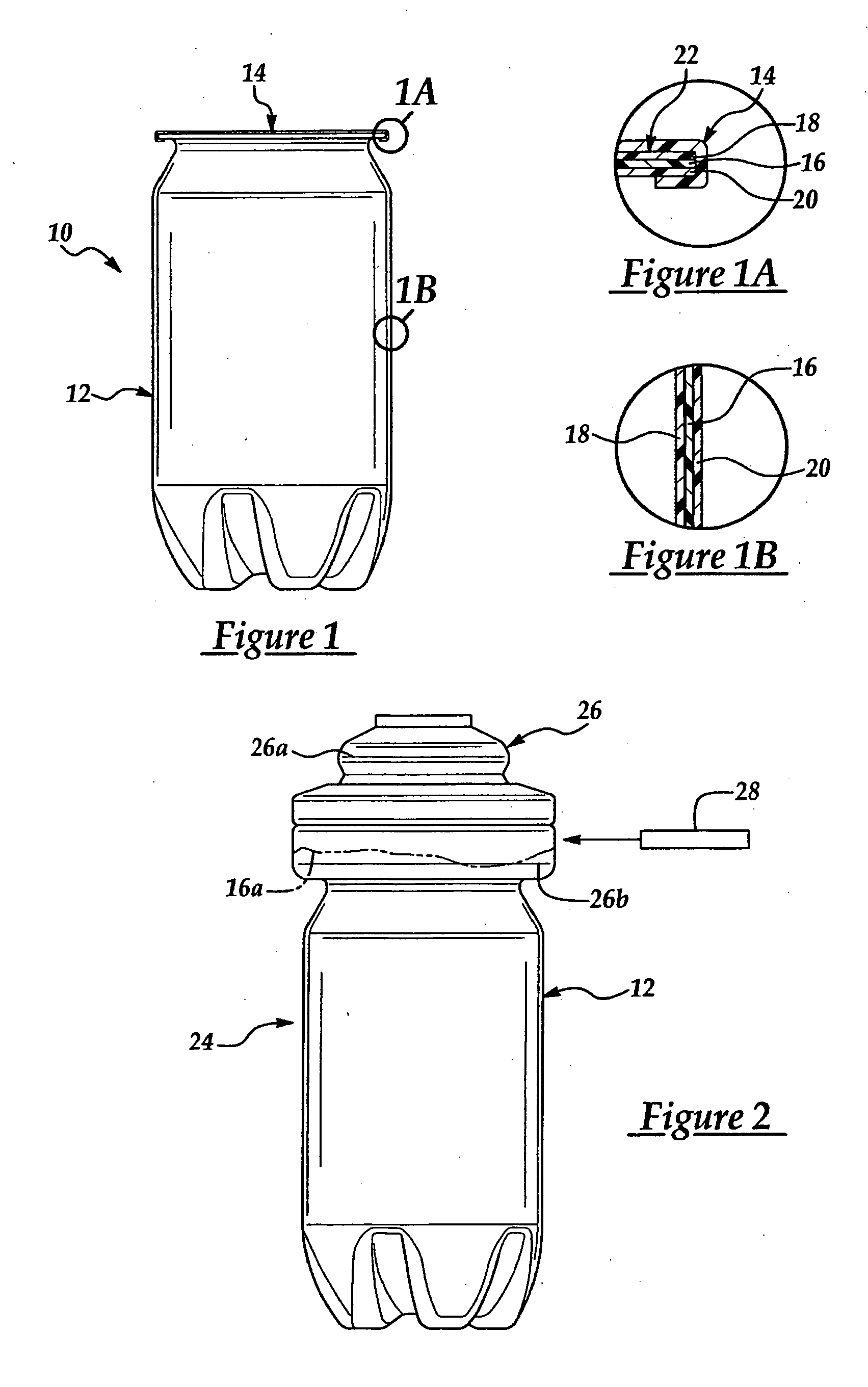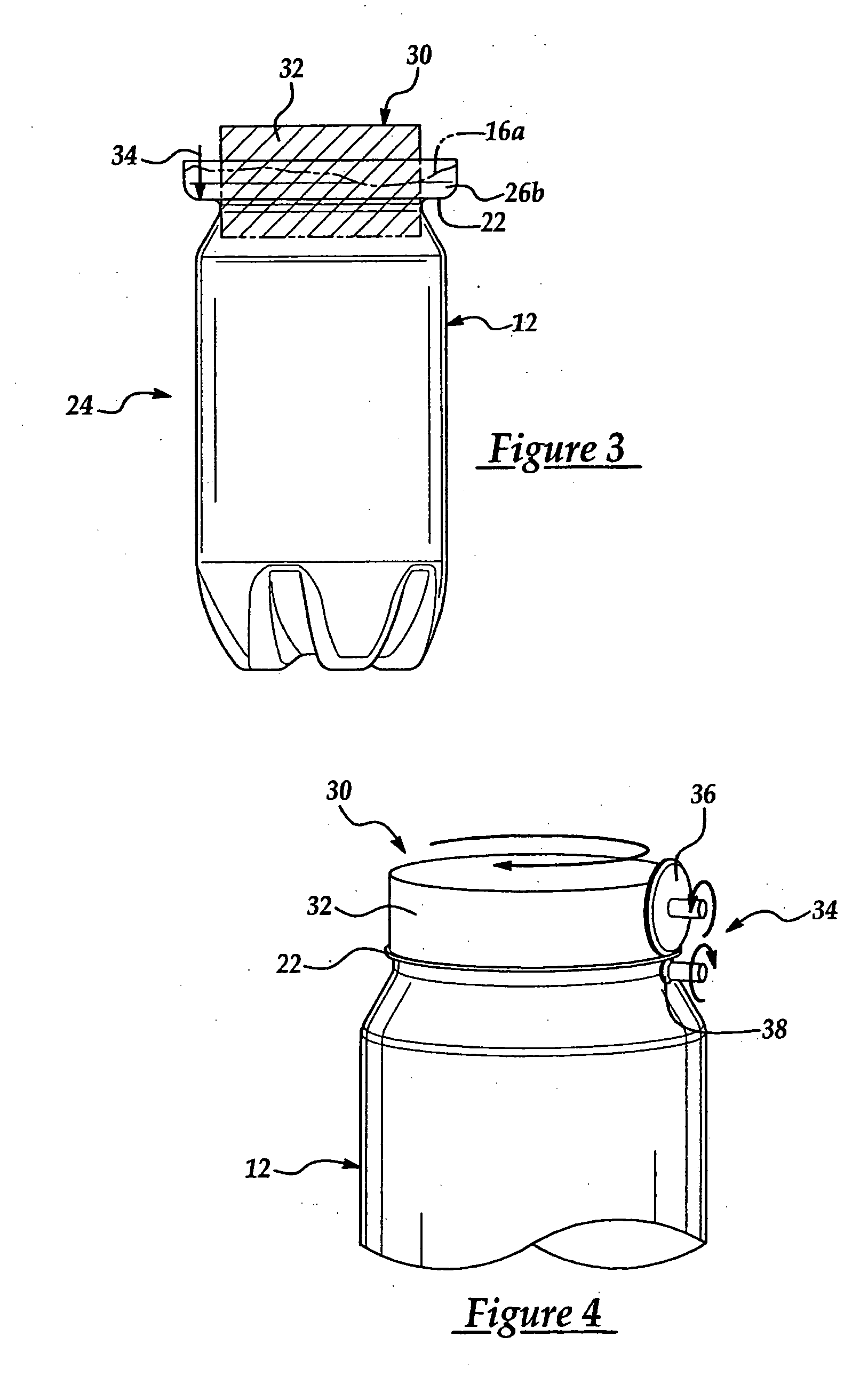Multilayer container trimming
a multi-layer container and container technology, applied in the direction of electric/magnetic/electromagnetic heating, other domestic articles, electric heating, etc., can solve the problems of difficult control of the placement of the edge, compromise the ability to use the trimmed moil, and the container is difficult to make, so as to reduce the delamination and wear problems
- Summary
- Abstract
- Description
- Claims
- Application Information
AI Technical Summary
Benefits of technology
Problems solved by technology
Method used
Image
Examples
Embodiment Construction
[0011]FIG. 1 illustrates a package 10 in accordance with one exemplary embodiment of the invention as including a container 12 to which a lid 14 is secured. Container 12 is of multilayer construction, having at least one outer or structural layer and at least one intermediate layer of barrier resin material. In the specific three-layer embodiment illustrated in FIGS. 1A and 1B, the container has an intermediate layer 16 sandwiched between inner and outer layers 18, 20. Layers 18, 20 may be of PET construction, for example, and intermediate layer 16 may be of barrier resin such as EVOH or nylon. Another exemplary construction would be a five-layer construction in the form PET / barrier / PET / barrier / PET. Barrier layer 16 extends throughout the body of container 12 to the edge of a flange 22 that projects radially outwardly from the open mouth of the container. Lid 14 may be of suitable metal construction, and may be crimped over flange 22 in a double-seam crimp configuration.
[0012] Cont...
PUM
| Property | Measurement | Unit |
|---|---|---|
| areas | aaaaa | aaaaa |
Abstract
Description
Claims
Application Information
 Login to View More
Login to View More - R&D
- Intellectual Property
- Life Sciences
- Materials
- Tech Scout
- Unparalleled Data Quality
- Higher Quality Content
- 60% Fewer Hallucinations
Browse by: Latest US Patents, China's latest patents, Technical Efficacy Thesaurus, Application Domain, Technology Topic, Popular Technical Reports.
© 2025 PatSnap. All rights reserved.Legal|Privacy policy|Modern Slavery Act Transparency Statement|Sitemap|About US| Contact US: help@patsnap.com



